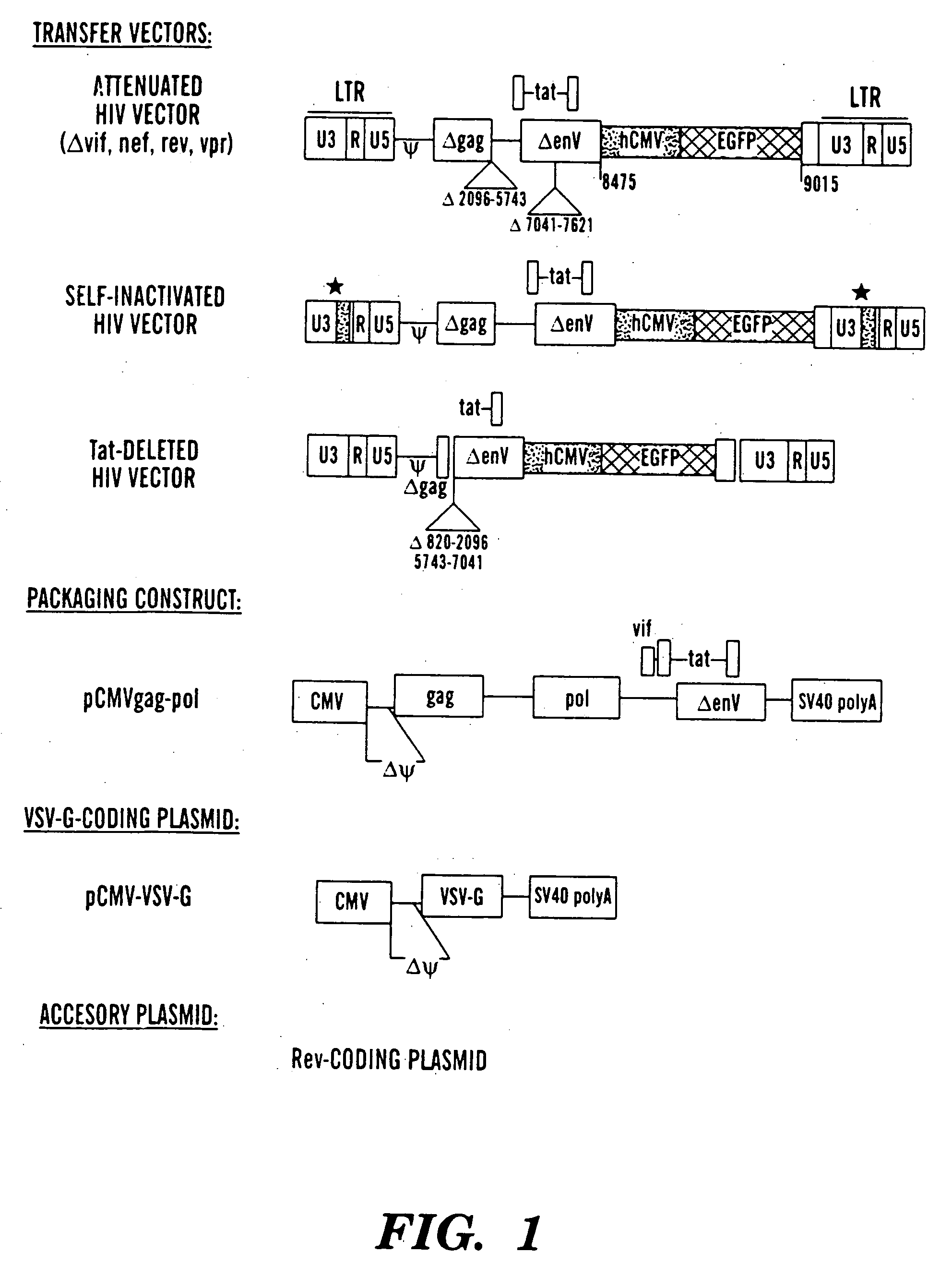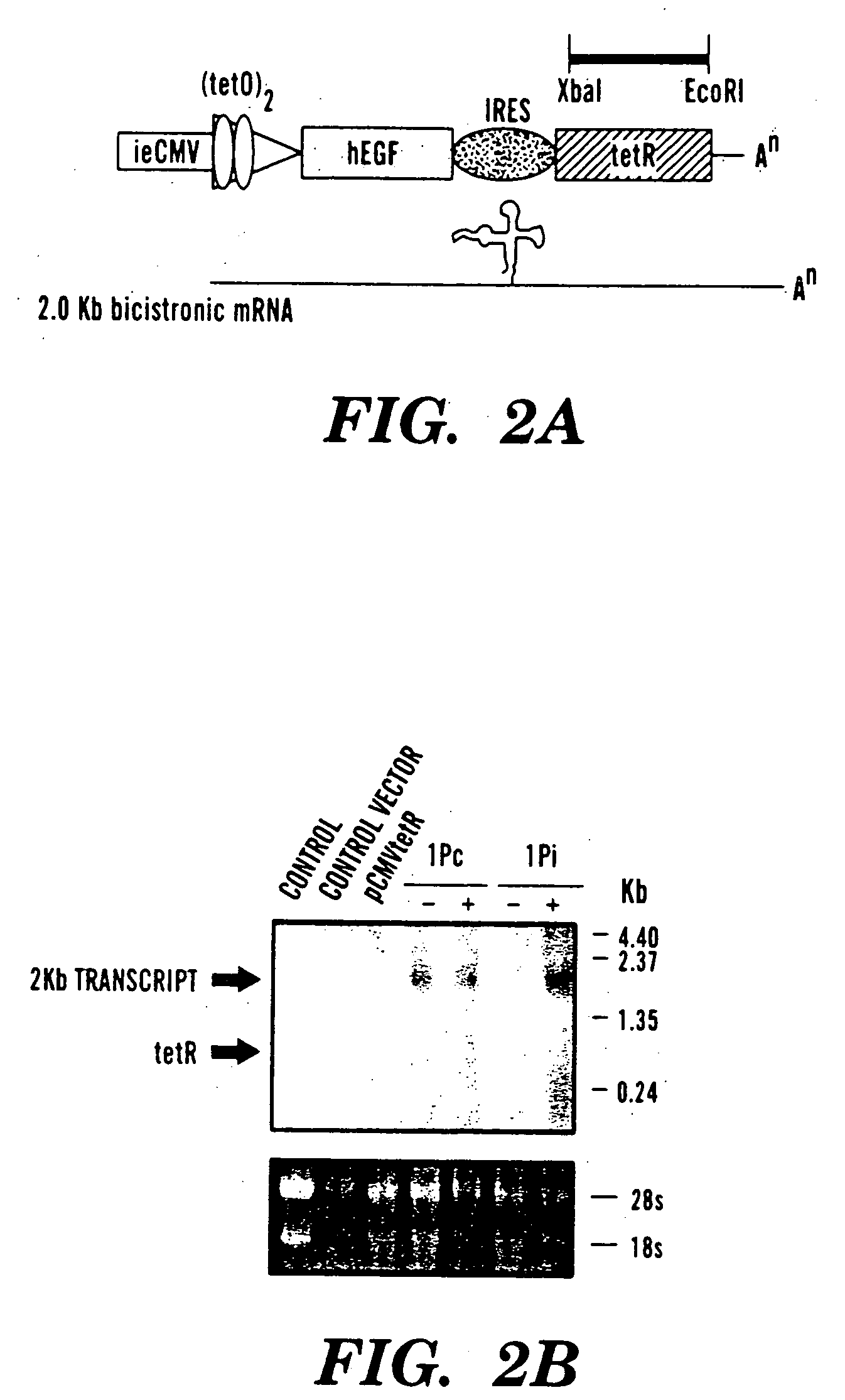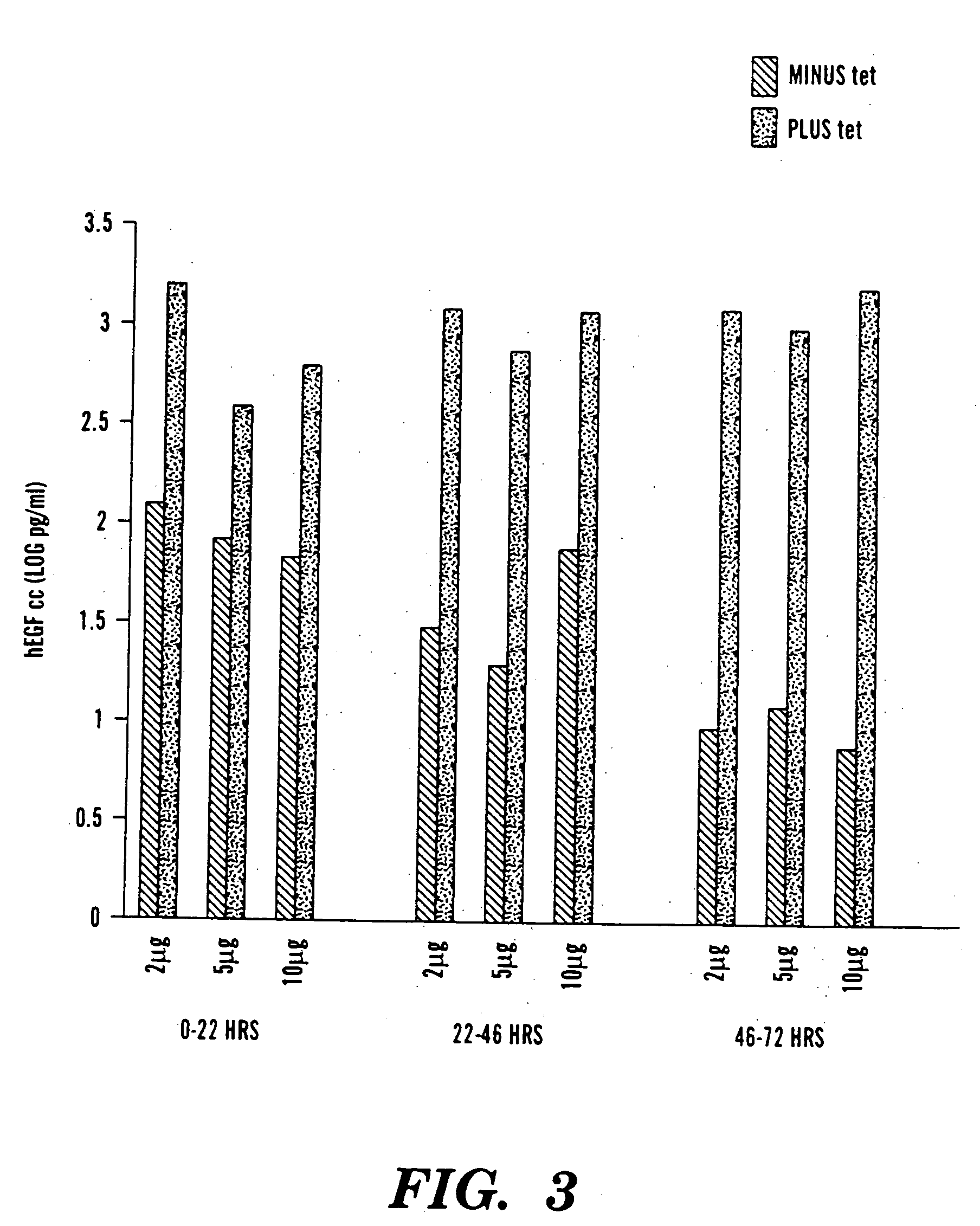Pseudotyped lentiviral vectors and uses thereof
a lentiviral vector and vector technology, applied in the field of vector systems, can solve the problems of not addressing the value of such work, failure to follow reporting procedures, and a great deal of attention
- Summary
- Abstract
- Description
- Claims
- Application Information
AI Technical Summary
Benefits of technology
Problems solved by technology
Method used
Image
Examples
examples
[0132] Construction of a Single-Plasmid Tetracycline-Inducible System
[0133] Basic One-Plasmid System
[0134] Our single inducible cassette (outlined in FIG. 1A) was constructed by three piece ligation of a internal ribosomal entry site (IRES) from the encephalomyocarditis virus (EMCV) and the tetR fragment removed from pcDNA3tetR into a NotI / ClaI sites of pCMVtetOhEGF [F. Yao et al., Human Gene Ther. 9: 1939-1950 (1998)]. The plasmid pCMVtetOhEGF, used as the parental vector for all our constructs contains the human epidermal growth factor (hEGF) gene driven by a chimeric promoter composed of ˜650 bp of the immediate early enhancer, cytomegalovirus promoter (ieCMV) and two tandem repeats of the tetracycline operator (tetO) positioned 10 bp downstream of the TATA box. A NotI-NheI fragment encoding the IRES sequence was removed from a previously described vector, pCMV-Fab 105 / 21H previously prepared by R. Levin et al., Mol. Med. 3: 96-110 (1997). A subcloning step, using the intermedi...
PUM
 Login to View More
Login to View More Abstract
Description
Claims
Application Information
 Login to View More
Login to View More - R&D
- Intellectual Property
- Life Sciences
- Materials
- Tech Scout
- Unparalleled Data Quality
- Higher Quality Content
- 60% Fewer Hallucinations
Browse by: Latest US Patents, China's latest patents, Technical Efficacy Thesaurus, Application Domain, Technology Topic, Popular Technical Reports.
© 2025 PatSnap. All rights reserved.Legal|Privacy policy|Modern Slavery Act Transparency Statement|Sitemap|About US| Contact US: help@patsnap.com



